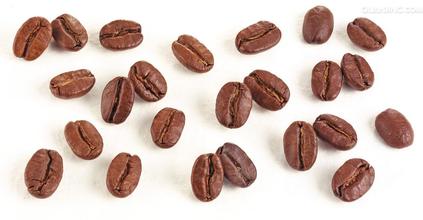Why do high-altitude coffee beans taste sour? What is the flavor difference between highland coffee and regular coffee
Why do high-altitude coffee beans taste sour?
Generally speaking, the more deeply roasted coffee beans, the less sour, or even none, and show another kind of pure coffee characteristics. After roasting, the acid content of raw coffee beans changed greatly, among which the change of volatile acid was the biggest. Therefore, today, when we are still in the habit of deep baking, it is difficult for us to taste the sour taste from the coffee that has been on the shelf for a long time.
The sour taste of coffee describes a lively, bright flavor, which is somewhat similar to that used in wine tasting. If the coffee bean lacks acidity, it is equal to lose vitality, taste empty and boring, without layer depth. Acidity has many different characteristics, such as coffee beans from Yemen and Kenya, which have an impressive fruity aroma and a red wine-like texture. If this cup of coffee in your hand has such a sour taste, it can even make you have some pleasant associations. Then please don't hesitate to enjoy the coffee before it cools. The acidity of coffee is affected by the variety and quality of raw coffee beans, but it is also related to harvest, storage time, baking and brewing. Bitterness constitutes the two major elements that affect the quality and taste of coffee. In terms of variety, the original Arabica is more sour than the original Robusta, while in terms of elevation, coffee grown in the highlands is sour than that in the lowlands, and then the beans that have just been harvested are sour than those that have been left for a while after harvest. Freshly harvested beans with good quality and high moisture content, if they can be heated properly to produce a moderate sour taste, can make the coffee taste better and make people feel that coffee is a fascinating crop. When the seeds enter the soil, they slowly sprout, grow leaves, blossom and bear fruit. It absorbs nourishment from the soil, as well as sunlight, air and water. It grows into a rich fruit with a cherry-like appearance. Coffee itself is the fruit of a kind of fruit, although it is baked at high temperature, but under its strong aroma, it is still rich in the taste of fruit. it has the sour, sweet and fragrant flavor of fruit.
The word "Coffee" comes from a small town in Ethiopia called kaffa, and in Greek "Kaweh" means "strength and passion".
Tea, coffee and cocoa are called the three major drinks in the world.
Coffee tree is a small evergreen tree of Rubiaceae, which is found in the tropics and subtropics. Leaves long ovate, flowers white, bearing crimson berries. There are small fruit, medium fruit, big fruit coffee and so on. Originated in Ethiopia.
Daily coffee is made from coffee beans combined with a variety of cooking utensils, and coffee beans refer to the nuts in the fruit of a coffee tree, which are then roasted by proper roasting methods.

Important Notice :
前街咖啡 FrontStreet Coffee has moved to new addredd:
FrontStreet Coffee Address: 315,Donghua East Road,GuangZhou
Tel:020 38364473
- Prev

Introduction to the quality of coffee bean berry treatment method, taste and flavor description method
Coffee treatment quality introduction semi-washing method, also known as honey treatment, is a compromise between drying and washing, eliminating the need for water-washing to ferment the coffee fruit. Harvesting and storage tank (removal of impurities and impurities) pulp removal machine (removal of pulp and impurities) washing pool (selection of light and hard beans) sun field (or dryer) sheller (removal
- Next

What are the advantages of high-altitude coffee beans? what are the differences in the flavor of different varieties of coffee beans at different elevations?
Introduction of high-altitude coffee varieties generally speaking, with the increase of altitude, the aroma of coffee will become more prominent and unique (see figure). From the temperature and sweetness of Brazilian beans at 3500 feet to the soaring taste of Ethiopian coffee beans above 6000 feet, altitude will give coffee beans a more complex and subtle taste. Coffee beans grown at high elevations are hard.
Related
- Guji coffee producing area of Guji, Ethiopia: Humbela, Shakiso, Wulaga
- What is the most expensive variety of Qiloso in BOP multi-variety group?
- How to store the coffee beans bought home?
- Why are Yemeni coffee beans so rare now?
- Ethiopian Sidamo all Red Fruit Sun Sun Santa Vini Coffee beans
- SOE is mostly sour? What does it mean? Is it a single bean? what's the difference between it and Italian blending?
- Is Italian coffee beans suitable for making hand-brewed coffee?
- How to choose coffee beans when making cold coffee? What kind of coffee beans are suitable for making cold coffee?
- Just entered the pit to make coffee, what kind of coffee beans should be chosen?
- Can only Japan buy real Blue Mountain Coffee? What are authentic Jamaican Blue Mountain coffee beans?

